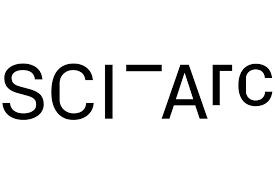World-renowed architectural school eliminates barriers to innovation
Fighting homelessness. Reimagining cities. Designing for sustainability.
Since 1972, the architectural school Southern California Institute of Architecture (SCI-Arc) in downtown Los Angeles has been teaching students to think unconventionally about how to tackle some of the architecture’s greatest challenges. Today the school is empowering students with a transformative new technology that demolishes obstacles to radical innovation.
“SCI-Arc is an incubator for new generations of problem solvers; we are looking at what architecture can be in five years, ten years or more,” said Kerenza Harris, an award-winning architect and SCI-Arc faculty member. “The 3DEXPERIENCE® platform allows us to break the mold of the traditional teaching format. It gives our students hands-on technology skills not only to land their first jobs, but also to imagine and shape the future.”
Parametric modeling transforms design process
Harris holds a particular interest in parametric design, which uses variables and algorithms to express mathematical and geometric design relationships. Embedded in the 3DEXPERIENCE platform, parametric design capabilities enable Harris’s students to create intelligent models that retain their histories while integrating new information. Students start with simple forms and shapes, and then develop them into complex projects. The models can reflect specified materials, methods of fabrication and assembly processes — and adapt when changes are necessary. Design solutions can be reused in subsequent project iterations or projects.
This could not be done with the tools students previously were using.
“A lot of students were basing their modeling practices on software that did not have parametric technology, so every time they wanted to draw something new, they’d delete and start again from zero,” Harris said. “It’s a big ‘aha’ moment for them to realize that a 3DEXPERIENCE model has a lifecycle. It doesn’t start from zero but rather retains its history of embedded information. So now your geometry and the forms you’re creating have intelligence, they relate to one another and understand relationships between their elements. When students realize this, we see a large progression in the way they can manipulate the information and the geometry.”
This advancement frees students to design more creatively and effectively. They can readily model their ideas, and as these models grow in complexity the designs begin to embed intelligence from other disciplines such as engineering. This closes traditional gaps between design aesthetics and execution.
“The software allows us to be more flexible in the design phase, to test out different options in a variety of iterations. Then, as the projects move forward and we begin to have even more information in the system, we talk to manufacturers to understand fabrication methods and the use of certain materials,” Harris said. “The information in the model becomes more structured, so by the end we produce something that is rich and heavy with connections and intelligence. A series of parameters that begin to address real architecture fabrication are embedded in.”
“These capabilities help close the gap between art and architecture,” said Alessio Grancini, a former teaching assistant at SCI-Arc.
“3DEXPERIENCE connects the two worlds because of the didactic way you go through projects,” Grancini said. “I think about what I need to make in terms of geometry, starting from one point in a line. Eventually it becomes a building. It’s powerful because usually you go from one software to another. Having everything on one platform makes you grow as a designer because the more skills you gain, the more things you can propose and build. It qualifies you as professional as well as an artist.”
SCI-Arc graduate student Elaine Chan wants to create architecture that is fresh, beautiful and meaningful. Traditionally, she’d start with an idea and work out its technical aspects later. Her education with Harris is introducing her to tools that can integrate these processes. Her class team, for example, has been working on designing furniture: a sofa, some lighting sets and other elements. The 3DEXPERIENCE platform allows her to manipulate these shapes as they interact with their environment.
“Since starting this class and using 3DEXPERIENCE, it’s become easier to develop my ideas,” Chan said. “I have a better handle on resolving the creative and technical aspects of the design at the same time. This helps me better understand what I am designing so I can develop something new and compelling.”
The 3DEXPERIENCE platform allows us to break the mold of the traditional teaching format. It gives our students hands-on technology skills not only to land their first jobs, but also to imagine and shape the future.
Cloud-based software eases collaboration
A design idea might start from a moment of inspiration, but developing it is a collaborative and multi-disciplinary process. In addition to using the 3DEXPERIENCE platform’s parametric design capabilities, SCI-Arc is using the software’s cloud-based delivery model to enable mobile access and stakeholder collaboration.
“We’re not locked into the lab through licensing restrictions allowing only localized access. Students can open the software on a studio desktop device or on a laptop anywhere,” Harris said. “Another huge benefit from using cloud-based software is that we’re always able to access one another’s files as we are working on them. I can connect with my students instantaneously.”
Harris finds it effective to have her students work on team-based projects. To facilitate this, she uses 3DSwYm, the social innovation application from Dassault Systèmes. Designed to dynamically share and leverage knowledge, 3DSwYm connects stakeholder communities inside and outside organizations — potentially empowering students to forge career-building relationships with industry professionals.
“We launched 3DSwYm for every class, and students post their work so teams can see the progress of their projects,” Harris said. “We create a full environment for the students to develop and communicate their ideas.”
Imagining life on mars
Seeking to engage and inspire students in a collaboration project, Harris teamed with Mars City Design, a Los Angeles-based organization that calls on a new generation of innovators to create a blueprint for a sustainable city on Mars. Mars City Design aims to bridge the gap between Science, Technology, Engineering and Math (STEM) experts, scientists and engineers, artists and architects. Harris worked with the organization to create a one-day workshop where her students met with professional architects and specialists from other disciplines, including augmented reality (AR) and virtual reality (VR).
“I thought that breaking the mold of the three-hour-a-week classroom seminar might be helpful if we’re thinking about the design, the optimization and then the production of these things we were creating,” Harris said. “The AR/VR workshop was a nice workflow using the tools we had learned in class.
The smart components they created now had a specific application with specific parameters that just happened to be on Mars. The final product allowed them to make a big step forward in their skills and understanding.”
By the end of the day, the students had created several virtual reality experiences of life on Mars as well as augmented reality experiences using Microsoft’s HoloLens, a holographic computer and head-mounted display.
“VR is very easy in CATIA; we just push a button and inhabit our models,” Harris said. “Immersion is key for the future of architecture. It allows architects to fully understand their designs before constructing them. Seeing their work and how it would be to inhabit the space, they can improve their designs and make them more livable. They also can show their ideas to others.”
Redefining the future of architecture
Since it was founded, SCI-Arc has been pushing the boundaries of what architecture can be and how it can be taught. The next wave of the future, introduced by Harris in her Applied Studies classes, is riding in on the 3DEXPERIENCE platform.
“We’re constantly re-evaluating architecture and the practice of it,” Harris said. “Teaching on the 3DEXPERIENCE platform, I’m providing the perfect incubator for these ideas to flow through — to create, to optimize, to work with the fabricator, to develop new technologies and innovative assemblies. My students are always finding new ways to surprise me.

Focus on Southern California Institute of Architecture
Located in downtown Los Angeles, SCI-Arc is a world-renowned center of innovation and one of the nation’s few independent architecture schools. Founded in 1972, SCI-Arc is devoted to finding radically new responses to the real needs and aspirations of today’s world. The school offers undergraduate, graduate and postgraduate programs for approximately 500 students.
Location: Los Angeles, California
For more information https://sciarc.edu/

